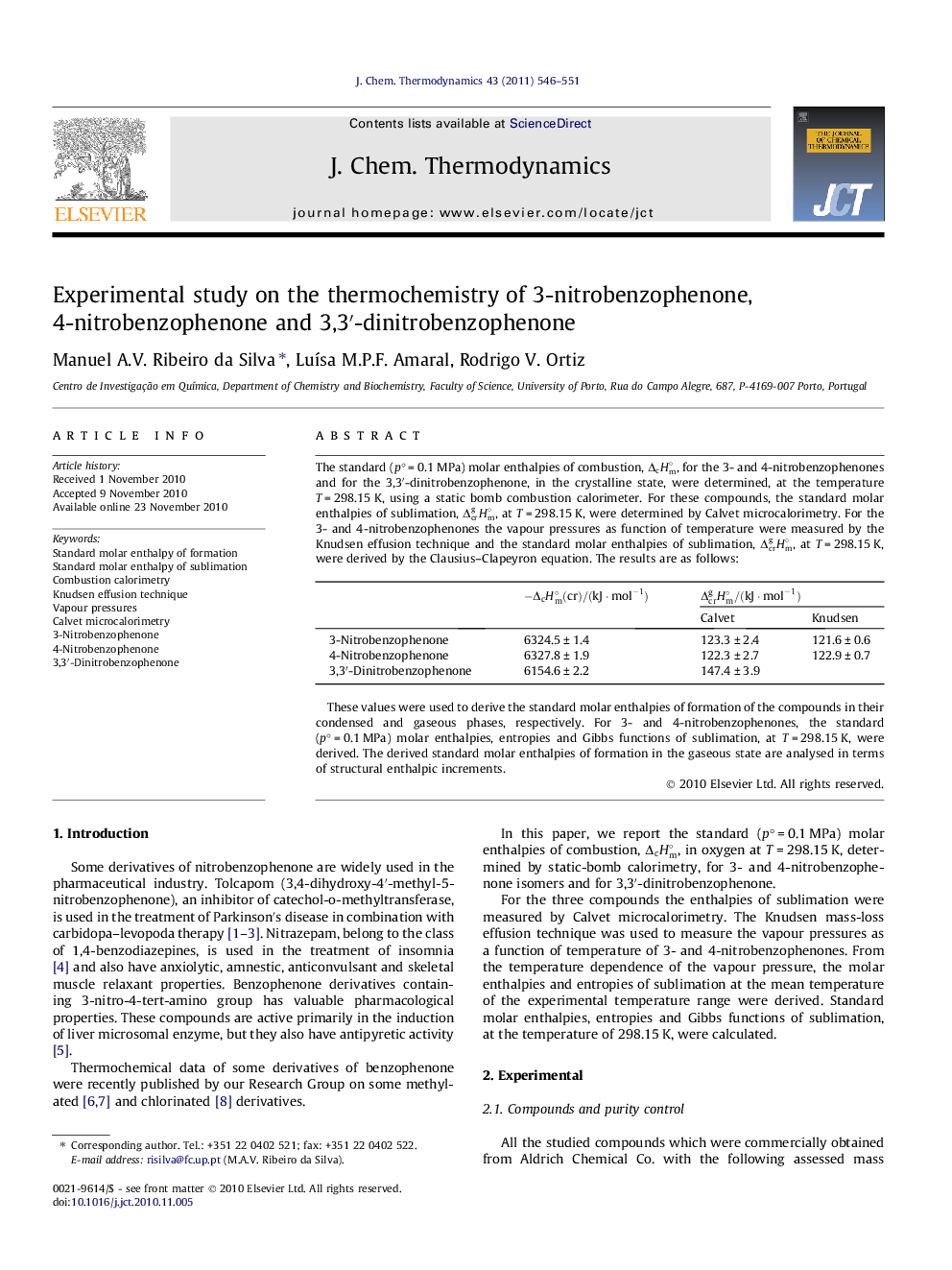| Article ID | Journal | Published Year | Pages | File Type |
|---|---|---|---|---|
| 216747 | The Journal of Chemical Thermodynamics | 2011 | 6 Pages |
The standard (p° = 0.1 MPa) molar enthalpies of combustion, ΔcHm∘, for the 3- and 4-nitrobenzophenones and for the 3,3′-dinitrobenzophenone, in the crystalline state, were determined, at the temperature T = 298.15 K, using a static bomb combustion calorimeter. For these compounds, the standard molar enthalpies of sublimation, ΔcrgHm∘, at T = 298.15 K, were determined by Calvet microcalorimetry. For the 3- and 4-nitrobenzophenones the vapour pressures as function of temperature were measured by the Knudsen effusion technique and the standard molar enthalpies of sublimation, ΔcrgHm∘, at T = 298.15 K, were derived by the Clausius–Clapeyron equation. The results are as follows:-ΔcHm∘(cr)/(kJ·mol-1)ΔcrgHm∘/(kJ·mol-1)CalvetKnudsen3-Nitrobenzophenone6324.5 ± 1.4123.3 ± 2.4121.6 ± 0.64-Nitrobenzophenone6327.8 ± 1.9122.3 ± 2.7122.9 ± 0.73,3′-Dinitrobenzophenone6154.6 ± 2.2147.4 ± 3.9Full-size tableTable optionsView in workspaceDownload as CSVThese values were used to derive the standard molar enthalpies of formation of the compounds in their condensed and gaseous phases, respectively. For 3- and 4-nitrobenzophenones, the standard (p° = 0.1 MPa) molar enthalpies, entropies and Gibbs functions of sublimation, at T = 298.15 K, were derived. The derived standard molar enthalpies of formation in the gaseous state are analysed in terms of structural enthalpic increments.
Research highlights► Standard molar enthalpies of formation of 3- and 4-nitrobenzophenones and of the 3,3′-dinitrobenzophenone, in the crystalline state, were determined, at the temperature T = 298.15 K. ► Vapour pressures of 3- and 4- nitrobenzophenones as function of temperature were measured by the Knudsen effusion technique. ► Enthalpies of sublimation of 3- and 4-nitrobenzophenones and of the 3,3′-dinitrobenzophenone were derived. ► The derived standard molar enthalpies of formation in the gaseous state are analyzed in terms of structural enthalpic increments.
